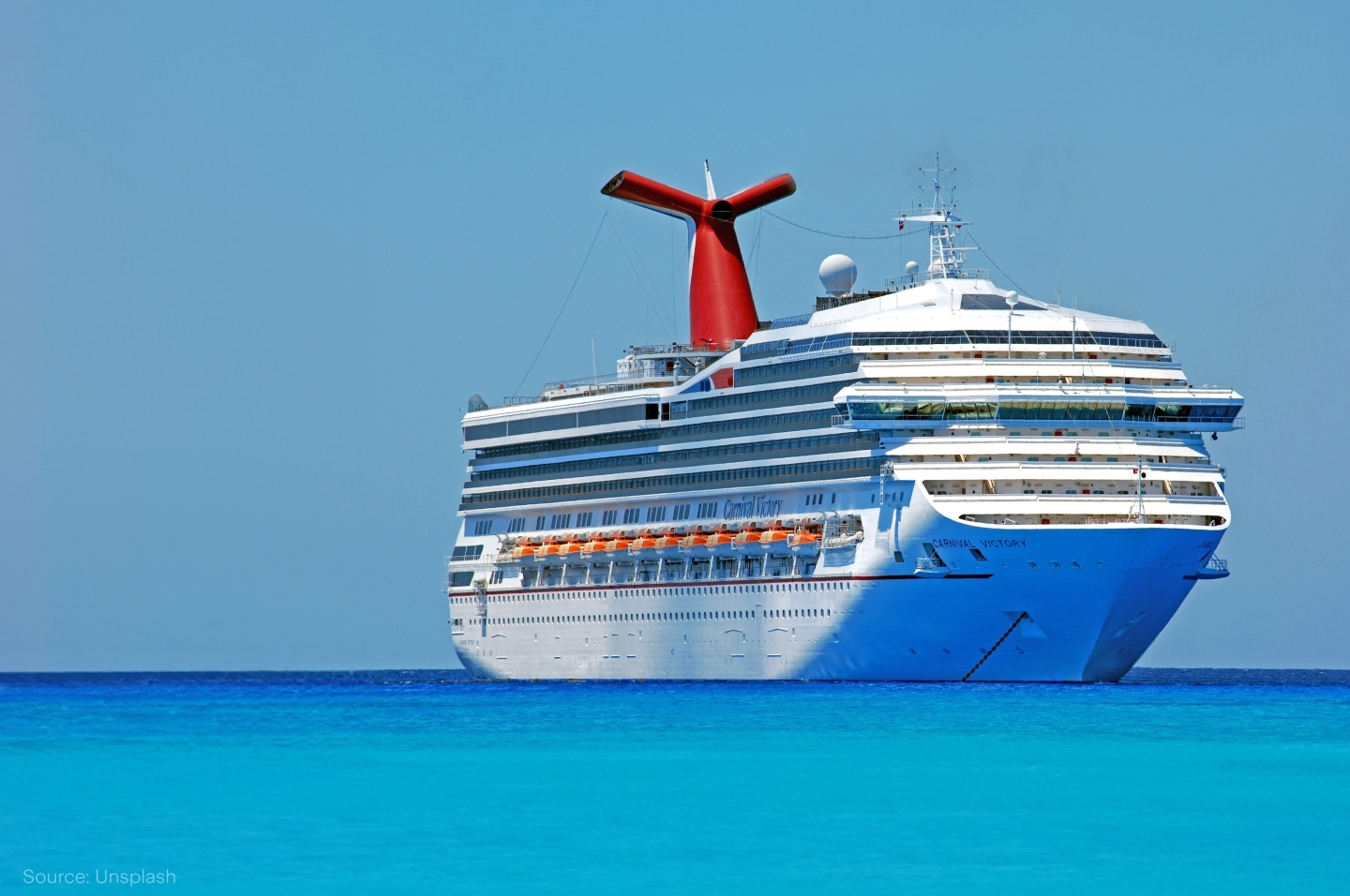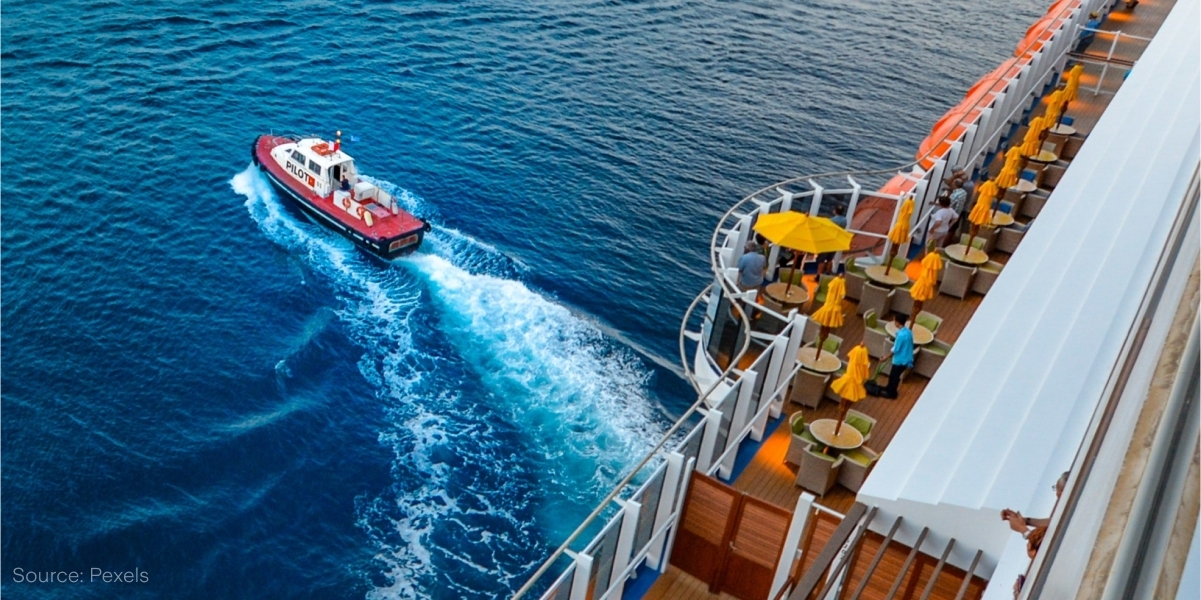
Under the Spotlight Wall St: Carnival Corporation (CCL)
After suffering serious losses during the pandemic, Carnival cruises have been all the rage in 2023. Will the company’s rise continue, or are the firm’s days of smooth sailing coming to an end? Let’s put it Under the Spotlight.
.jpg&w=3840&q=100)
Although cruising became popular within certain circles between the mid-nineteenth and mid-twentieth centuries, the main objective of travelling by sea for most people was to get from point A to point B.
That began to change when Ted Arison co-founded Norwegian Cruise Lines ($NCLH) with Knut Kloster in the 1960s. There were already ocean liners cruising the seas, but Norwegian put the ships themselves even further under the spotlight, commissioning gigantic craft that came complete with a wide range of facilities. Of course, there were still stops at ports for customers to do some sightseeing, but travelling aboard a ship was no longer something to be endured for most people. Rather, it became the main value proposition.
The cruise industry was growing and in 1972 Arison decided to strike out on his own and founded Carnival Corporation ($CCL), aiming to create a more affordable and accessible cruise travelling experience. Offering what seemed like extravagant trips at bargain prices, Carnival would go on to become the world’s biggest cruise liner, known for its ‘Fun Ships’, as the company calls its vessels.
And indeed, the firm tries very hard to keep its guests entertained. Nowadays, besides having numerous pools, and multiple restaurants and bars, some Carnival ships have outlandish offerings. Take the Mardi Gras, for example, which has a full-blown water park and even a rollercoaster on its deck.
Restaurant partnerships with celebrities like former basketballer Shaquille O’Neal and chef Guy Fieri also help to increase brand awareness as well as giving credibility to the ship’s food offerings.

Stormy seas
The COVID-19 pandemic rocked the cruise industry. In February 2020, the world watched on as the Diamond Princess became stranded in Yokohama, Japan. More than 2,500 passengers and 1,000 crew members had to quarantine in their cabins for two weeks as COVID infections spread through the ship. After all was said and done, more than 700 people aboard the ship – one of Carnival subsidiary Princess Cruises’ most luxurious vessels – tested positive for the virus.
In March of that same year, cruise trips were halted in the U.S. and much of the world. And to top it off, US cruise lines weren’t eligible for any of the US$2 trillion government stimulus package signed off that month that helped much of the travel industry.
Carnival is a geographically diverse company, operating over 90 ships across nine subsidiary cruise lines – such as P&O Cruises and Cunard – in Australia, the U.S., China and Europe. However, with its operations halted because of the pandemic, the cruise ship giant burned cash fast, approximately US$650m every month. Watching its balance sheet deteriorate rapidly, the company decided to act quickly, and through a combination of debt and equity offerings, Carnival managed to raise over US$10b in cash during Q2 2020 as it braced for some rough months ahead.

Picking up steam
Despite cruise trips beginning to resume in June 2020, it wasn’t until Q3 2021 that Carnival’s revenue started to pick up again, so the company had to undergo new capital raises throughout 2020 and early 2021. In Q3 2021, revenue rose from US$50m in the previous quarter to US$546m as COVID-19 finally seemed to start to fade away (before the final boom of the Delta variant) and travel-thirsty passengers could ultimately board cruise ships once again with more confidence, allowing Carnival to begin to get back on track.
In Q3 2023, the cruise line’s revenue reached a new all-time high as sales totalled US$6.9b. However, investors have remained sceptical about the cruise line colossus’ ability to consistently turn a profit and deleverage itself.
Even though Carnival’s net income has gone a long way from its US$-4.37b trough in Q1 2020, in Q3 2023 it totalled only US$1.07b, below its pre-pandemic high of US$1.78b. Making the net income number rise even higher is paramount if the firm is to become financially healthy once again. As it stands, Carnival’s total debt lies at US$32b, more than tripling since the pandemic began, while its debt to equity ratio rose by more than 10x, jumping from 0.45 in Q4 2019 to 4.69 in Q3 2023.
.png&w=3840&q=100)
With US$5.7b in cash and equivalents, and having been able to withstand the pandemic, the rise of inflation and interest rates, it’s hard to imagine that tougher times are ahead. But even though the worst might be behind it, it’s still unclear whether Carnival’s journey will be smooth or if its investors could face severe sea sickness.
This does not constitute financial advice nor a recommendation to invest in the securities listed. The information presented is intended to be of a factual nature only. Past performance is not a reliable indicator of future performance. As always, do your own research and consider seeking financial, legal and taxation advice before investing.

Megan is a markets analyst at Stake, with 7 years of experience in the world of investing and a Master’s degree in Business and Economics from The University of Sydney Business School. Megan has extensive knowledge of the UK markets, working as an analyst at ARCH Emerging Markets - a UK investment advisory platform focused on private equity. Previously she also worked as an analyst at Australian robo advisor Stockspot, where she researched ASX listed equities and helped construct the company's portfolios.

